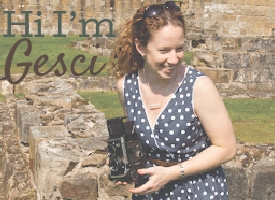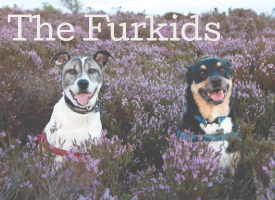1. If you visit Sofia, do the Free Sofia Tour. Not only do we recommend it, but it's the #1 Thing to Do according to Tripadvisor. We had Kiril as our guide, and not only did he have excellent English (as well as a good handling of several other languages) but his passion and love for his native city really shone through. I learned more about Sofia's history and main sites from his tour than from searching the internet both before our trip and at the hotel after the tour!
2. If you want to take pictures in a site or church, ask someone if it's allowed. Many churches have "no photo"signs up, but if you ask the candle vendor or priest they will often allow it, for a small fee. That said, please respect a site that maintains a "no photos" policy, and respect worshipers' privacy if you are able to take photographs.
3. Try the local food at least once- it's a lot of heavy stews and hearty dishes (although I had a potato omelette), but not greasy or fatty tasting. That said, the food is also very bland. Compared to Hungary's heavy paprika (which I liked!), Bulgarian food is nearly tasteless- and this coming from someone who likes English food! Every Mexana (tavern) has seasonings on the table, though, including a blended herb seasoning- using it helps the flavor appear!
4. Try doors. Not homes, of course- but churches, sites, and governmental buildings. The Presidential buildings had a courtyard that our tour guide walked our group straight through- and we saw the Rotunda of St. George Church. None of the churches were visibly open, but we tried doors (or, in the case of the Holy Trinity Church, I waited and followed someone else in) and got in no problem. Most of the buildings were shut and curtained in order to keep out the extreme cold, but they were still open to worshippers and tourists alike.
5. Learn some basic Bulgarian words and phrases! I checked out Lonely Planet's Eastern European Phrasebook from our library and post-it marked the relevant pages- and I used that thing constantly! From basic salutations to social niceties, from numbers to directions, from ordering off a menu written in Bulgarian to asking if the traditional textiles were durable enough to stand up to everyday use and washing (yep, between the phrasebook and hand motions I got all that across- and an excited "da, da!" in return!), I used Bulgarian many times a day. When I went out in Bansko alone one afternoon (more below) I felt more confident with the phrasebook in hand than I would have just fumbling with slow English and hand motions. I found far fewer English speakers here than anywhere else we've been so far- but the Bulgarian people I met were also the most willing to listen to my stumbling attempts at their native language, and the most helpful when I tried!
6. This one isn't so much a tip as a comment- both Paul and I felt very safe in Bulgaria. Walking around, asking for directions, even taking a bus (read: large van from the 1960s) from Sofia to Bansko with only the guidance of a little-English speaking woman in the middle of the rundown, edge-of-town bus station, I never once felt unsafe, at risk, or nervous. I also didn't have any qualms walking around Bansko alone- it is a small town, but even crowded with tourists I didn't ever feel uneasy. Now, since Barcelona was our most recent trip, this could have been an over-reaction sigh of relief compared to the on-edge feeling I had there regarding pickpocketers and thugs. That said, Paul and I did discuss it, and despite our joking that we could have been sold into human trafficking on that same bus/van (seriously, there were no roadsigns in English or with the Bulgarian writing for "Bansko" for over an hour!) neither of us felt anxious. Plus we got to see Mannequin 2 on our ride- which we didn't even know existed (yeah, it was terrible).
7. As far as the outdoor sports go: Bansko had some good ski runs (according to the skiers in our group, i.e. everyone except Billy and me!), despite the best ones being closed off for the World Cup. That said, none of them thought the amount of time and effort it took to get to Bansko was worth it- the two hours of long, windy, bumpy roads it takes to get there from either airport (Sofia and Plovdiv) plus the cost of the flights and ground transport greatly compromise the affordability of the skiing.
That said, Sarah and I have both heard good things about the beaches of the Black Sea, and Bulgaria does offer a lot of off-the-beaten-path activities for hikers, campers, and other explorers.
One thing I was interested in seeing was the Dancing Bear Refuge, a sanctuary for former dancing bears located about an hour from Bansko. Unfortunately, it's closed in the winter so as to encourage the bears to hibernate (they don't when they arrive, because they were never allowed to in captivity). There are refuges scattered throughout Europe, and I'd love to someday volunteer or at least visit one.
2. If you want to take pictures in a site or church, ask someone if it's allowed. Many churches have "no photo"signs up, but if you ask the candle vendor or priest they will often allow it, for a small fee. That said, please respect a site that maintains a "no photos" policy, and respect worshipers' privacy if you are able to take photographs.
3. Try the local food at least once- it's a lot of heavy stews and hearty dishes (although I had a potato omelette), but not greasy or fatty tasting. That said, the food is also very bland. Compared to Hungary's heavy paprika (which I liked!), Bulgarian food is nearly tasteless- and this coming from someone who likes English food! Every Mexana (tavern) has seasonings on the table, though, including a blended herb seasoning- using it helps the flavor appear!
4. Try doors. Not homes, of course- but churches, sites, and governmental buildings. The Presidential buildings had a courtyard that our tour guide walked our group straight through- and we saw the Rotunda of St. George Church. None of the churches were visibly open, but we tried doors (or, in the case of the Holy Trinity Church, I waited and followed someone else in) and got in no problem. Most of the buildings were shut and curtained in order to keep out the extreme cold, but they were still open to worshippers and tourists alike.
5. Learn some basic Bulgarian words and phrases! I checked out Lonely Planet's Eastern European Phrasebook from our library and post-it marked the relevant pages- and I used that thing constantly! From basic salutations to social niceties, from numbers to directions, from ordering off a menu written in Bulgarian to asking if the traditional textiles were durable enough to stand up to everyday use and washing (yep, between the phrasebook and hand motions I got all that across- and an excited "da, da!" in return!), I used Bulgarian many times a day. When I went out in Bansko alone one afternoon (more below) I felt more confident with the phrasebook in hand than I would have just fumbling with slow English and hand motions. I found far fewer English speakers here than anywhere else we've been so far- but the Bulgarian people I met were also the most willing to listen to my stumbling attempts at their native language, and the most helpful when I tried!
6. This one isn't so much a tip as a comment- both Paul and I felt very safe in Bulgaria. Walking around, asking for directions, even taking a bus (read: large van from the 1960s) from Sofia to Bansko with only the guidance of a little-English speaking woman in the middle of the rundown, edge-of-town bus station, I never once felt unsafe, at risk, or nervous. I also didn't have any qualms walking around Bansko alone- it is a small town, but even crowded with tourists I didn't ever feel uneasy. Now, since Barcelona was our most recent trip, this could have been an over-reaction sigh of relief compared to the on-edge feeling I had there regarding pickpocketers and thugs. That said, Paul and I did discuss it, and despite our joking that we could have been sold into human trafficking on that same bus/van (seriously, there were no roadsigns in English or with the Bulgarian writing for "Bansko" for over an hour!) neither of us felt anxious. Plus we got to see Mannequin 2 on our ride- which we didn't even know existed (yeah, it was terrible).
7. As far as the outdoor sports go: Bansko had some good ski runs (according to the skiers in our group, i.e. everyone except Billy and me!), despite the best ones being closed off for the World Cup. That said, none of them thought the amount of time and effort it took to get to Bansko was worth it- the two hours of long, windy, bumpy roads it takes to get there from either airport (Sofia and Plovdiv) plus the cost of the flights and ground transport greatly compromise the affordability of the skiing.
That said, Sarah and I have both heard good things about the beaches of the Black Sea, and Bulgaria does offer a lot of off-the-beaten-path activities for hikers, campers, and other explorers.
One thing I was interested in seeing was the Dancing Bear Refuge, a sanctuary for former dancing bears located about an hour from Bansko. Unfortunately, it's closed in the winter so as to encourage the bears to hibernate (they don't when they arrive, because they were never allowed to in captivity). There are refuges scattered throughout Europe, and I'd love to someday volunteer or at least visit one.












No comments:
Post a Comment
Thanks so much for stopping by! I can't wait to read your comment!